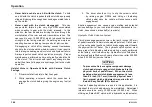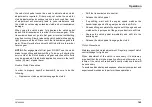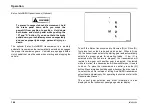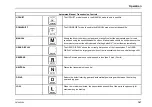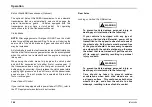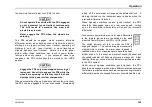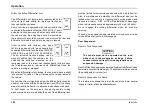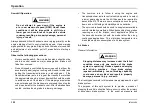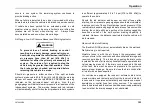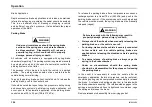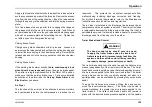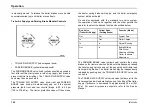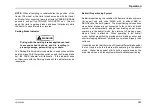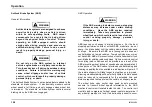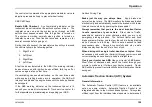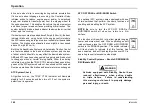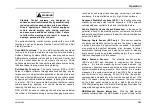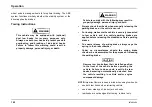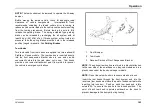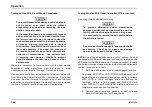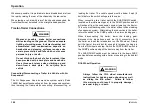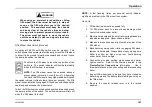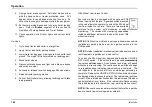
Operation
Antilock Brake System (ABS)
General Information
WARNING
Antilock brake systems are designed to enhance
overall vehicle safety when a vehicle is driven
within its safe operating limits.
ABS cannot
compensate for a vehicle that is being driven
beyond the physical limits of control.
Drivers
operating an ABS equipped vehicle should
employ safe driving practices and assume no
additional driving risks. Failure to do so could
result in property damage, personal injury, or
death.
WARNING
Do not rely on the ABS system to interrupt
vehicle engine brake on slippery road surfaces.
Turn these devices off during hazardous driving
conditions.
Failure to follow this warning may
cause wheel slippage and/or loss of vehicle
control, which could result in property damage,
personal injury, or death.
The Antilock Brake System is a mandated feature added to the
standard air brake system.
It electronically monitors vehicle
wheel speed at all times, and only engages when wheel lock
is imminent. The standard air brake system controls normal
braking when the ABS is not engaged.
ABS Operation
WARNING
If the ABS warning indicator comes on, stopping
distances may increase under certain braking
conditions.
Have the ABS system repaired
immediately.
Take every precaution to prevent
wheel lockup, which could result in loss of vehicle
control causing property damage,
personal
injury, or death.
ABS requires no changes in driving practices.
For the best
stopping performance with or without ABS, modulate - do not
pump - the brake pedal until the vehicle slows to desired speed
or stops.
Be aware that ABS on a towing vehicle does not
control brakes on towed vehicles. Towed vehicles may or may
not have ABS. ABS will prevent lockup of controlled wheels if you
over-brake for existing road conditions. Optimum vehicle control
for existing road conditions will be provided as a result of the
ABS preventing wheel lockup at speeds above approximately 4
miles per hour. The ABS cannot provide any better braking and
steering capability than the available road traction will permit. If
the road is slippery it will take longer to stop than on a dry road.
Steering maneuverability will be similarly limited. Vehicle speed
must be reduced to compensate for the extended time and
distance required to stop or slow the vehicle on slippery roads.
The wheel hubs carry exciter rings used by axle mounted
sensors to transmit wheel speed information to the ABS
electronic control unit located inside the cab. The control unit
monitors and compares all wheel speed inputs to determine if
any wheel(s) are about to lock. If wheel lockup is about to occur,
158
3878859R2
Summary of Contents for ProStar+ Eagle Series.
Page 4: ...Operator s Manual ProStar Series Printed in the United States of America 3878859R2 ...
Page 12: ...Table of Contents Section 10 Index Index 235 viii 3878859R2 ...
Page 26: ...Model Description Exterior Components 14 3878859R2 ...
Page 28: ...Model Description 16 3878859R2 ...
Page 59: ...Controls Features 3878859R2 47 ...
Page 70: ...Controls Features Declination Zone Map 58 3878859R2 ...
Page 93: ...Controls Features Center Dash Panel Wing Panel 3878859R2 81 ...
Page 128: ...Sleeper Features 116 3878859R2 ...
Page 182: ...Operation 170 3878859R2 ...
Page 241: ...Maintenance Intervals and Specifications Typical Interior Fuse Panel Layout 3878859R2 229 ...
Page 262: ...Index 250 3878859R2 ...

